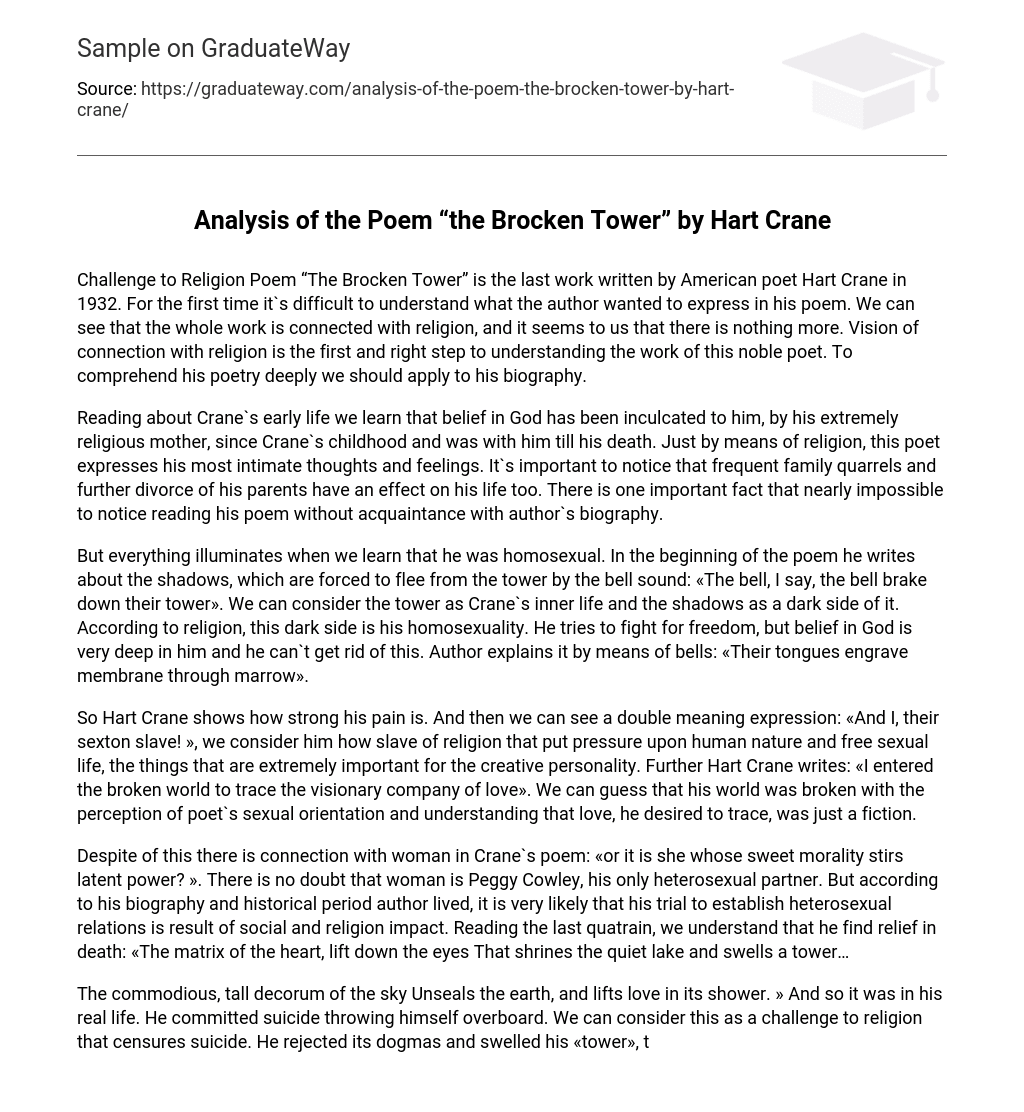Challenge to Religion Poem “The Brocken Tower” is the last work written by American poet Hart Crane in 1932. For the first time it`s difficult to understand what the author wanted to express in his poem. We can see that the whole work is connected with religion, and it seems to us that there is nothing more. Vision of connection with religion is the first and right step to understanding the work of this noble poet. To comprehend his poetry deeply we should apply to his biography.
Reading about Crane`s early life we learn that belief in God has been inculcated to him, by his extremely religious mother, since Crane`s childhood and was with him till his death. Just by means of religion, this poet expresses his most intimate thoughts and feelings. It`s important to notice that frequent family quarrels and further divorce of his parents have an effect on his life too. There is one important fact that nearly impossible to notice reading his poem without acquaintance with author`s biography.
But everything illuminates when we learn that he was homosexual. In the beginning of the poem he writes about the shadows, which are forced to flee from the tower by the bell sound: «The bell, I say, the bell brake down their tower». We can consider the tower as Crane`s inner life and the shadows as a dark side of it. According to religion, this dark side is his homosexuality. He tries to fight for freedom, but belief in God is very deep in him and he can`t get rid of this. Author explains it by means of bells: «Their tongues engrave membrane through marrow».
So Hart Crane shows how strong his pain is. And then we can see a double meaning expression: «And I, their sexton slave! », we consider him how slave of religion that put pressure upon human nature and free sexual life, the things that are extremely important for the creative personality. Further Hart Crane writes: «I entered the broken world to trace the visionary company of love». We can guess that his world was broken with the perception of poet`s sexual orientation and understanding that love, he desired to trace, was just a fiction.
Despite of this there is connection with woman in Crane`s poem: «or it is she whose sweet morality stirs latent power? ». There is no doubt that woman is Peggy Cowley, his only heterosexual partner. But according to his biography and historical period author lived, it is very likely that his trial to establish heterosexual relations is result of social and religion impact. Reading the last quatrain, we understand that he find relief in death: «The matrix of the heart, lift down the eyes That shrines the quiet lake and swells a tower…
The commodious, tall decorum of the sky Unseals the earth, and lifts love in its shower. » And so it was in his real life. He committed suicide throwing himself overboard. We can consider this as a challenge to religion that censures suicide. He rejected its dogmas and swelled his «tower», that is got freedom, but this was fatal step. If he were not religious, nothing would prevent him from living in harmony with his own nature. On the other hand, he would never create such strong work without the pressure of religion and society, which made him to wrestle with temptation.





